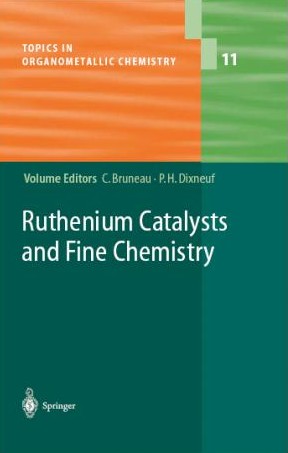"Ruthenium Promoted Radical Processes Toward Fine Chemistry"
Lionel Delaude, Albert Demonceau, and Alfred F. Noels
 |
title: Ruthenium Catalysts and Fine Chemistry
series: Topics in Organometallic Chemistry
editors: Christian Bruneau and Pierre H. Dixneuf
publisher: Springer
city: Berlin
year: 2004
volume: 11
first page: 155
last page: 171
isbn: 3-540-20543-8
doi: 10.1007/b94645
|
Abstract: Ruthenium holds a prominent position among the many transition metals used in radical chemistry. The dichlorotris(triphenylphosphine) complex [RuCl2(PPh3)3] was the first active ruthenium-based catalyst investigated for atom-transfer radical addition processes and has found numerous applications in organic synthesis. Other catalytic systems that have been devised since include (1) neutral or cationic Grubbs-type complexes bearing an alkylidene fragment and either phosphine, N-heterocyclic carbene, or Schiff base ligands; (2) half-sandwich ruthenium complexes bearing a cyclopentadienyl, a pentamethylcyclopentadienyl, or an indenyl ligand, and (3) ruthenium complexes bearing anionic carborane-phosphine and dicarbollide ligands. Their activities are discussed and the predictive value of cyclic voltammetry in radical chemistry is questioned. A related example of a ruthenium-catalyzed C-H hydroxylation reaction is also reported.
[Full Text] [<< Previous Book Chapter] [Back to the List of Publications] [Next Book Chapter >>] l.delaude@ulg.ac.be